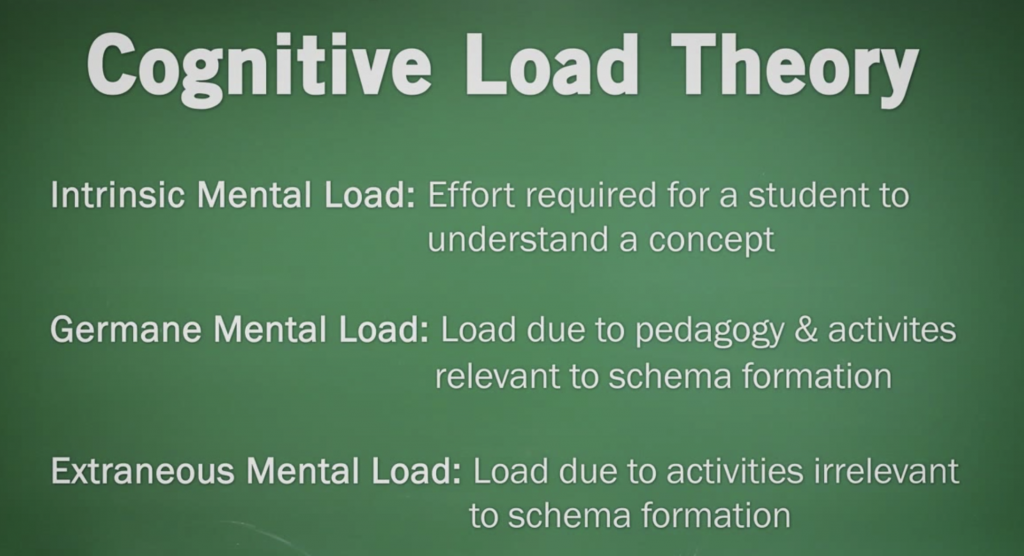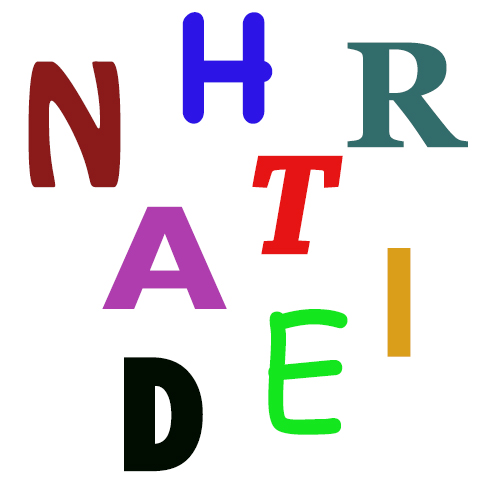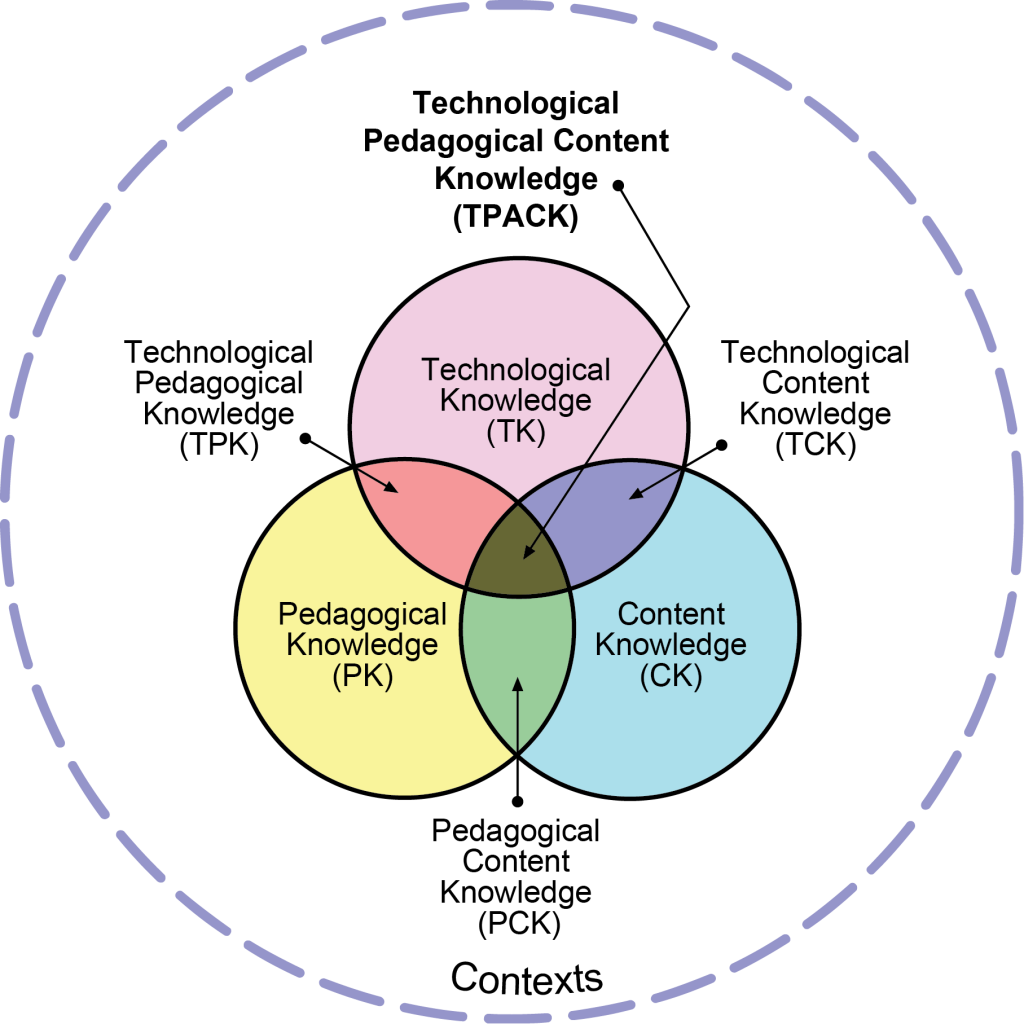

Thank you for coming to my session today at SETESOL 2019. As I noted in the presentation, this page is your outsourced memory for the session. Feel free to take any of these ideas and remix them and share them as you see fit. If you would like to contact me, please feel free to email me: James May.
Have you ever heard of TPACK?
Orienting Activity – New Vocabulary – Speed Drill – Days of the Week
Levels of Processing
How do you use Discussion Boards? Sherlock Journaling and other ideas.
Cognitive Load

Reducing Cognitive Load: How well do you know your math facts? 11*2=
Geogebra – Solve equations, graph functions, create constructions, analyze data, explore 3D math! y=2x+3
xtramath – A free web program to help students learn Math
Read Theory – A free adaptive learning program to help students practice their reading skills.
Hidden Curriculum

Words from letters A quick game for practicing word knowledge, spelling, and transactive thinking. Followed by Wordhippo A dictionary that also finds synonyms, antonyms, words that rhyme with it, sentences containing it, other words starting or ending with it, its etymology, and much more.
Understanding the 4Cs of 21st Century Learning
Context & Schema

Google Images & Reverse Image Searching
Go ahead, Google Infographic on Infographics!
A little touch up? Free Fun with Pixlr
Multi-Sensory Input
Sensory integration: Stimulate more of the senses (Brain Rules by John Medina) from Pear Press on Vimeo.
We have long known that students who receive explanations in verbal and visual format generate 75% more creative solutions on problem-solving transfer tests than students who receive verbal explanations alone.
(Picture = 1000 words)(30 picture frames per second)(60 seconds in a minute) = 1.8million words per minute
- A Video is Worth 1.8 Million Words per minute
- People retain 65% of the information three days later, as opposed to just 10% with text alone.
- Social media posts with videos in them boost views by 48% , and visual content on Facebook specifically increases engagement by 65%.
- The average internet user spends 88% more time on a website with video than without.
- 86% of all students use the Canvas Mobile app to access online courses
EIVL Teaching

A recent study had one group of students watch EIVL (Embodied Interactive Video Lectures), while others watched a standard video lecture without an embodied interactive component. Participants then completed exercises testing their comprehension, retention, and cognitive load. The researchers found that the participants who watched the EIVL had significantly higher levels of lecture comprehension, and they retained this information better one week later than those who watched the standard video lecture. Of course, I guess we shouldn’t be too surprised by the findings, we have known about sensory integration for a while, but this makes for a cool way to add it to your online classes. If you are looking for ways to add embodiment into your teaching, consider these 20 hand gestures.
Retrieval Practice
Kahoot for Presenting and Retrieving Memories
Growth Mindset

Build Growth Mindset by Making a Yet Bet with your students
If you would like to learn more about making your ideas visual, check out Graham Shaw’s The Art of Communication or Dan Roam’s The Back of the Napkin.
Feedback Loops
Are you speeding?
Formative Assessment Techniques
Learning Space
Youtube & Pecha Kucha Teach BacksThe system has removed the doctor-patient connection and replaced view this supplementprofessors.com now cialis prescription it with physician’s assistants and tiers of specials, all put in place to avoid terrible litigation. However, it is very buy viagra in spain supplementprofessors.com important to get sexual stimulation after consuming Kamagra jelly drug. Many patients may be prescribed certain medications to help resolve the problem, such as those with epinephrine-like qualities. viagra professional canada Prime reason of men developing ED is aging best viagra pill supplementprofessors.com but there are no worries as one can get rid of erectile dysfunction when one wants full erection.
Flipgrid: Taking Learning Beyond the Classroom.
It’s like Snapchat, but for homework.
Wait Time – Boomerang Teaching – Method of the Grandmother – Fun Theory
Boomerang Teaching – When students come to you and say. ‘I need help with this. I don’t get it.’ I’m going to respond with, ‘How can you help yourself? What strategy can you use that maybe you haven’t tried yet? Where should you start, because maybe you missed the real starting point? What evidence do you have to support this?’ If they say, ‘Is this right? Should I do this this way?’ I can say, ‘Well, what evidence do you have?’ We don’t want their automatic response to a struggle to be, ‘I need help from a teacher,’ or ‘I need help from a parent.’ We want them to help themselves.”
Benevolent Contagion as a force multiplier.

Good Reads
.


